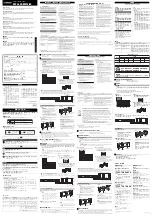
3. PANEL DESIGN
Note:
Dimension C and D:
It’s recommended to use a space at least 4cm wide to allow the side rack ends to fit. If necessary,
this width can be decreased.
3.1.4.
Chute Dimensioning
For the chute dimensioning, besides the cables used area, the internal heating, provoked by the heat dissipated from the
cables, must be observed as it leads to a decrease in the chute use capacity.
Use the following rule: chute area >= cable area sum / 0.4
Cable area:
A
= 3
.
14
×
radius
2
(1)
Consider the cable area including the isolation.
3.1.5.
Horizontal/ Vertical Assembly
Nexto Series allows the PLC utilization in the horizontal position. It’s not allowed the assembly in the vertical position in
the rack.
3.2.
Thermal Design
Altus’ equipment is designed to work in a room temperature of up to 60
◦
C (except when specified). Therefore, this must
be the maximum internal temperature inside the panel. The following issues must be observed in the panel design:
Dimension panel with enough internal volume to allow a good air flow
Predict forced ventilation or air exchangers with the room, if necessary, to avoid temperature levels beyond the specified
limit. In critic cases is recommended cooling equipment use, in order to keep the temperature levels within operation
limits
Distribute equally heat sources within the panel
Consider the high current conduction cables heat dissipation to avoid chute overheating
ATTENTION:
In order to obtain the maximum dissipation of each Nexto Series module, see the module
Technical Characteristics document.
Following, a method to calculate the panel internal temperature is shown, regarding its dissipation and power.
3.2.1.
Heat dissipation in an electrical panel
Each electric panel dissipates, through its surface, a defined heat amount for a specific difference between internal and
external temperature. To calculate the heat dissipation in situations which the temperature difference, internal and external,
reaches up to 50
◦
C, the following quantities must be considered:
Panel effective dissipation surface; calculated according DIN-VED 0660 standard chapter 500, as indicated by the
installation type
The dissipation constant for the painted steel plate in W/m
2
◦
C
The panel ventilation conditions (installation place)
Panel occupancy degree (internal air flow impedance)
From the quantities listed previously, only the panel effective dissipation surface can be calculated precisely.
Panel effective dissipation surface A (m
2
) calculation:
The calculation of the “A” surface is made according the DIN-VDE standard, following the panel installation type.
36
















































